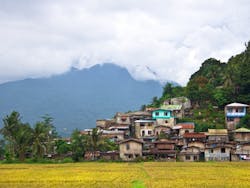Philippines Group Urges Asian Development Bank to Finance Microgrid Projects
The Asian Development Bank (ADB) should support community microgrids as part of a shift away from fossil fuels, according to an advocacy group based in the Philippines.
“As the costs of solar and wind technologies have decreased exponentially and have become competitive with fossil fuel technologies, ADB should be looking into community microgrids as attractive investments…” said the Center for Energy, Ecology and Development (CEED) in a report released Sept. 11.
The report was issued as the bank is preparing to hold a two-day annual meeting starting Sept. 17. The bank provided about $68 billion in financial support for energy projects in Asia and the Pacific from 2009 through 2018. Fossil-fueled projects accounted for about half the bank-backed installed capacity in that period, according to the report.
The development bank is overly focused on fossil-fuel projects, according to the CEED.
Besides funding more renewable energy and smart grid projects, the bank should target microgrids, the organization said.
Why community microgrids are attractive investments
“Community microgrids should be prioritized since they maximize energy access and are increasingly cost-competitive and bankable,” the group said.
Community microgrids may be attractive investments to the development bank through aggregation into larger bankable-sized projects, or, if feasible, through being added to main energy sector projects as a special energy access component, the CEED said.
Microgrids can be used to empower communities. “Through community microgrids, communities can play an increasing role in advancing both energy transformation and energy security,” the group said.
Microgrids also can help island nations provide electricity to people that don’t have it, the CEED said, noting that the Philippines, for example, have about 2.5 million people without power.
The group urged the development bank to provide loans to financing intermediaries, which in turn could help fund microgrid projects.
Policy change needed
The Asian Development Bank in August recommended that governments in the Asia-Pacific region include microgrids in their power system planning and design.
“Specific policies and regulations to clarify microgrid as a distinct power asset class and their technical standards in terms of grid interconnection would go a long way in incentivizing microgrid investments,” the development bank said in a guide on microgrids.
The organization said clarity on tariffs, licensing, and permitting for microgrids would help support the systems. In the guide it describes targeted concessional lines of credit and financial risk-sharing facilities as a way to help increase access to financing.
Track news about community microgrids. Subscribe to the free Microgrid Knowledge newsletter.
